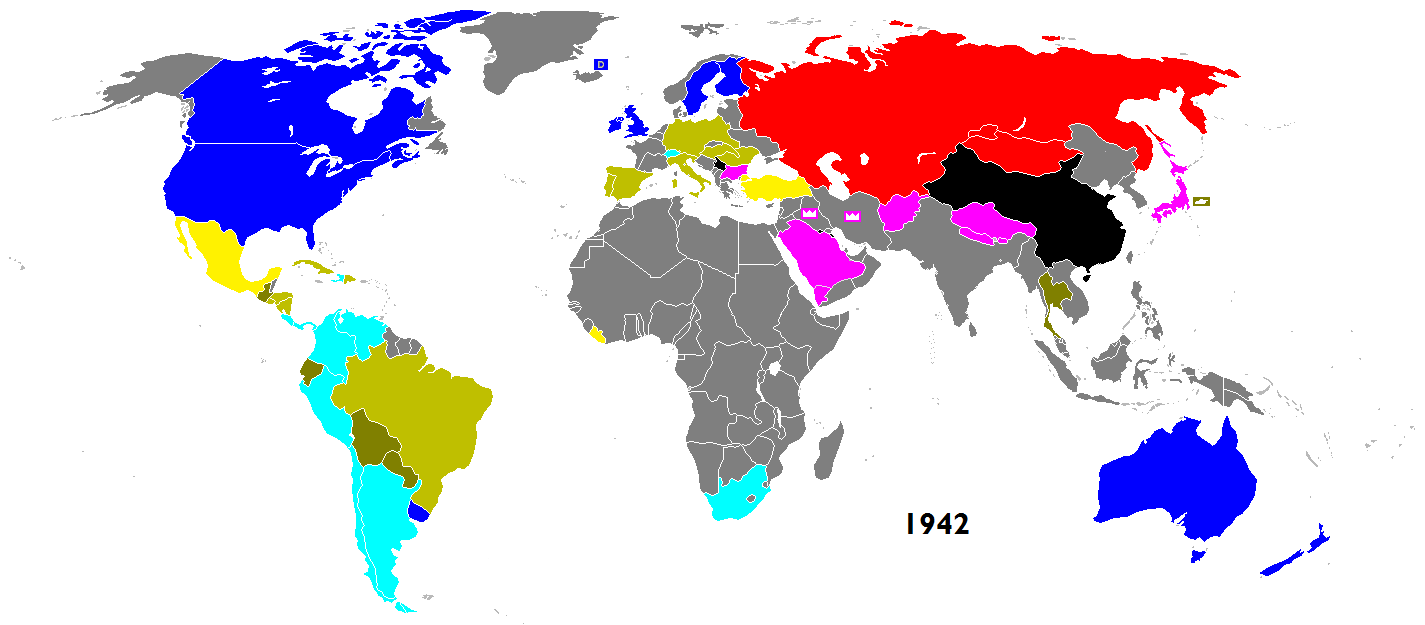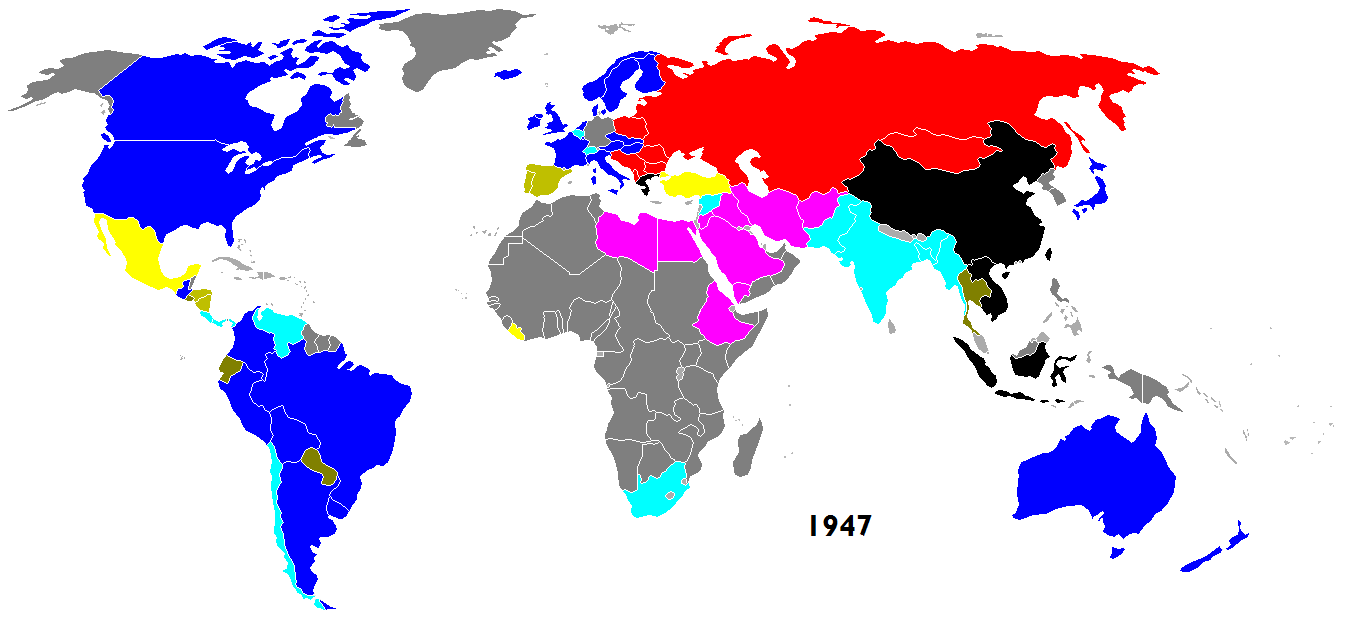
The 1940s


 Once
the Second World War cranked up to full strength, it began
wiping nations off the earth by the bucketful. Between 1937 and
1942, 18 nations were plowed under by the relentless bulldozer
of war. Ten nations (Austria, Czechoslovakia, Poland, Denmark,
Norway, Netherlands, Belgium, France, Yugoslavia, Greece) were
swallowed up by the Germans in just three years. One country
(Albania) was annexed by the Italians, and 3 (Estonia, Latvia
and Lithuania) disappeared into the Soviet Union. In addition, 4
theoretically neutral countries (Iceland, Iraq, Egypt, Persia)
were occupied by the Anglo-American alliance in order to prevent
them from falling into the wrong hands. All in all, 25% of of
the world's nations disappeared for the duration of the war.
Once
the Second World War cranked up to full strength, it began
wiping nations off the earth by the bucketful. Between 1937 and
1942, 18 nations were plowed under by the relentless bulldozer
of war. Ten nations (Austria, Czechoslovakia, Poland, Denmark,
Norway, Netherlands, Belgium, France, Yugoslavia, Greece) were
swallowed up by the Germans in just three years. One country
(Albania) was annexed by the Italians, and 3 (Estonia, Latvia
and Lithuania) disappeared into the Soviet Union. In addition, 4
theoretically neutral countries (Iceland, Iraq, Egypt, Persia)
were occupied by the Anglo-American alliance in order to prevent
them from falling into the wrong hands. All in all, 25% of of
the world's nations disappeared for the duration of the war.
Although the end of the war restored most of the conquered
nations, many had had their political structures wrecked. In
Eastern Europe, the nations which had been (liberated?
conquered? trampled?) by the Soviet Union tried to set up
multiparty democracies, but Soviet-sponsored Communist parties
quickly gained the upper hand and put an end to that. In China,
the Communists and Nationalists resumed the civil war which had
been interrupted by the Japanese, while left and right also
fought a civil war over who would inherit Greece. In East Asia,
a couple of colonies (French Indo-China and the Dutch East
Indies) seized the moment and tried to prevent their former
masters from reclaiming control after the Japanese surrendered.
Even in those colonies which had escaped Japanese occupation,
the imperialist hold had been weakened by the war. Losses in
lives and wealth made it more difficult for the motherlands to
keep their colonies under control. Also, because the winners of
the Second World War had fought to preserve freedom worldwide,
they were now obliged to grant freedom to their own vassals. By
1950, nineteen (more or less [n.1]) new nations had emerged, and
colonialism was pretty much dead -- at least in Asia.
The defeat of the Nazis and the allied occupation of the
aggressor nations pretty much eradicated Fascism worldwide.
Germany was split into four zones where each ally could
cultivate a new regime in its own image, and by 1949, the
western Allies had managed to implant a stable, peaceful and
tolerant democracy on the world's most dangerous people. Japan
was given a democratic constitution which renounced war and
denied the divinity of the emperor. Italy's new government was a
model of democratic indecisiveness which changed leaders as
often as most people change socks. Only in Iberia and Latin
America did a sort of quasi-fascism linger under the likes of
Salazar (Portugal), Franco (Spain) and Peron (Argentina), but
even here, wartime American pressure had pushed the majority of
South American nations to renounce Fascist leanings.
NOTES:
[n.1]
Bhutan, Burma, Cambodia, Ceylon, Iceland (completely), India,
Indonesia, Ireland (completely), Israel, Jordan, a Korea or two,
Laos, Lebanon, Mongolia (completely), Pakistan, Philippines,
Syria, Taiwan (de facto) and Vietnam (nominally).
[back]
![[Previous Chapter]](images/previous_arrow.gif) |
![[Next Chapter]](images/next_arrow.gif) |
